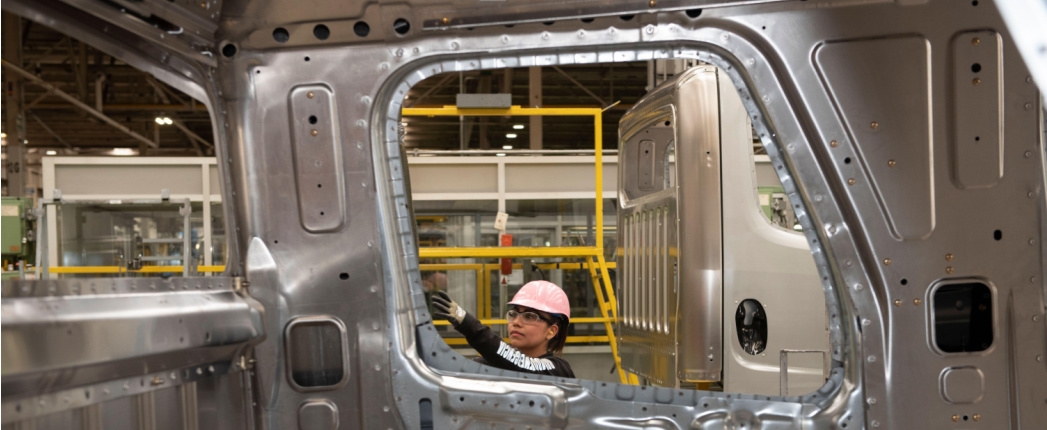
North America’s finished lubricant demand is projected to grow at a compound annual rate of 0.8% out to 2032, held back by shrinking consumer demand for automotive lubes, while the South American market is forecast to expand at a 2.5% rate, boosted by rising demand in the consumer and industrial segments, according to consultancy Kline & Co.
“The U.S. and Canada will witness consumer automotive lubricant demand shrink because of electrification and usage of lower viscosity oils that are available as full synthetics,” Sushmita Dutta, a project manager in Kline & Co.’s energy practice said during an Oct. 4 webinar based on insights from its “Global Lubricants: Market Analysis and Opportunities” report. “Oil drain interval extensions will not help the market to grow.”
In North America, the company forecasts lubricants demand to grow at a CAGR of 0.4% by 2027, with demand slightly more in 2032 than in 2027.
The United States lubricant demand over that period is projected to be essentially flat to 2027. A 1% compound annual decline rate for consumer passenger vehicles demand is expected to balance out modest CAGR increases for commercial vehicle lubricant and industrial lubricant demand.
Canada’s lubricant demand is projected to decline at a 1% compound annual decline rate, with a deeper decline of 2% for its consumer vehicle lubricant demand.
In the U.S., the company does expect that the industrial sector and off highway commercial segments will grow because of government policies and initiatives, she said, such as infrastructure and inflation reduction bills and more focus on driving growth in the manufacturing sector to reduce dependence on China.
In North America out to 2027, Mexico’s lubricant demand is expected to achieve almost 3% CAGR, with an industrial lubricants demand growth rate nearing 4%. She noted that Mexico’s projected lubricant demand growth stands out. “That’s because unlike its neighbors, the transit mix does not align with the trends we see in the U.S. and Canada,” Dutta said. She explained that as a developing country, per capita vehicle ownership in Mexico is much lower compared to the U.S., and its per capita two-wheeler ownership is much lower compared to Asian countries such as India and Indonesia. “So there’s a lot of potential to grow vehicle penetration” in Mexico, she added.
Mexico is an important manufacturing country, especially in automotive manufacturing, thanks to proximity to the U.S., she noted.
To 2027, the region’s largest lubricant market, Brazil is expected to have a nearly 2% CAGR in lubricant demand. Leading will be its industrial lubes market, with a CAGR of more than 2.5%. Dutta noted that trends witnessed in Brazil tend to be reflected in the overall South America region. Brazil’s lubricant market declined in 2022 after significant growth in 2021, she said, likening it to what several countries in Europe experienced in 2021 and 2022.
The highest CAGR projected for a country in the South America region is 3% for Peru, led by a nearly 3.5% CAGR for its consumer passenger vehicle lubricants demand. Colombia’s projected CAGR for lube demand is also up near 3% over the period, and its passenger vehicle lube demand CAGR is also up near 3.5%.
Kline projects a more modest CAGR just over 2% for Argentina, led by an industrial lube demand growth rate of nearly 3%.
Chile’s CAGR is projected to be a more modest rate just above 1.5%, with consumer vehicle lubricant demand growth rate forecast to be up near 2%.
Kline estimated global finished automotive and industrial lubricants demand declined 2% to 39 million metric tons in 2022, compared to 40 million tons in 2021, just shy of the pre-pandemic 41 million tons demand in 2019.
COVID-19 impacted the global lubricants market, causing demand to decline in 2019. It rebounded to 40 million tons in 2021, but demand did not reach the pre-pandemic level in 2022. “This happened because in many markets we saw the demand went down in year 2022, especially in Europe and In China, for different reasons,” she said. “Looking forward, the outlook is positive.” Kline estimated that the top five lubricant suppliers in 2022 were Shell, ExxonMobil, BP, TotalEnergies and Chevron. The rest of the top 10 included Sinopec, PetroChina, Fuchs, Idemitsu Kosan and Valvoline.